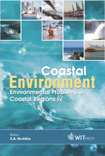A Debris Flow Phenomenological Analysis In The Vicinity Of Coastal Regions
Price
Free (open access)
Transaction
Volume
58
Pages
Published
2002
Size
553 kb
Paper DOI
10.2495/CENV020161
Copyright
WIT Press
Author(s)
G Lorenzini & N Mazza
Abstract
Debris flows are among the most frequent and destroying geomorphic processes. In order to reduce the risk, the present work places before the problem of how to intervene an analysis of the phenomenology and a study of the mechanisms of its triggering. After presenting and comparing in a critical way the main approaches to the problem, original thematic considerations are performed so to develop, in future investigations, a method applicable to study the dynamics of transport processes in debris flows. 1 Introduction The problems concerning debris flows, for the augmented frequency of their happening and for their consequent affection to the anthropic system, have encountered an increasing interest both from the research groups and from the operators charged with land management and planning. A debris flow consists of a mass movement affecting sediments poorly sorted, shaken and mixed with water, which, being present as deposits in the mountain part of the basins, start to move due to alluvial events, determining sediment floods rapidly propagating downstream. As debris flows are among the most frequent and destroying geomorphic events, it exists the exigency to set up some criteria identifying risk areas and defining protection strategies. An approach concerning the mitigation of these phenomena is aimed at intervening on the natural system, trying to reduce the interactive potential through structural measures [l]. A direct intervention must anyway be flanked by an action on the anthropic system, mobilising people and resources, either temporarily with alert or evacuation systems or permanently with the regulation of the risk areas [2]. In a perspective of debris flow risk mitigation
Keywords





